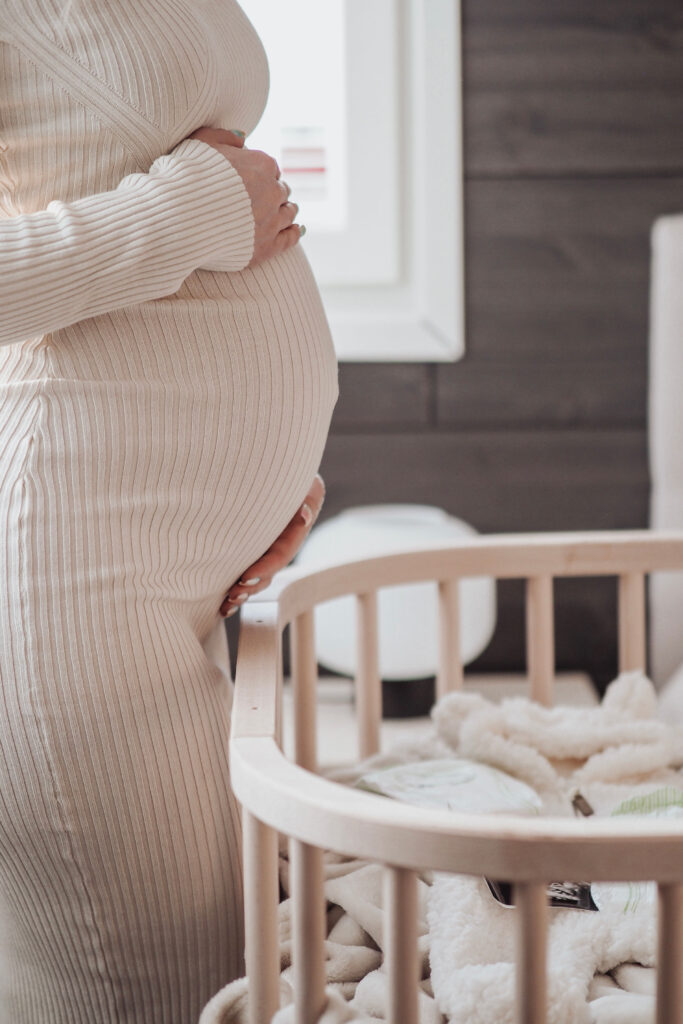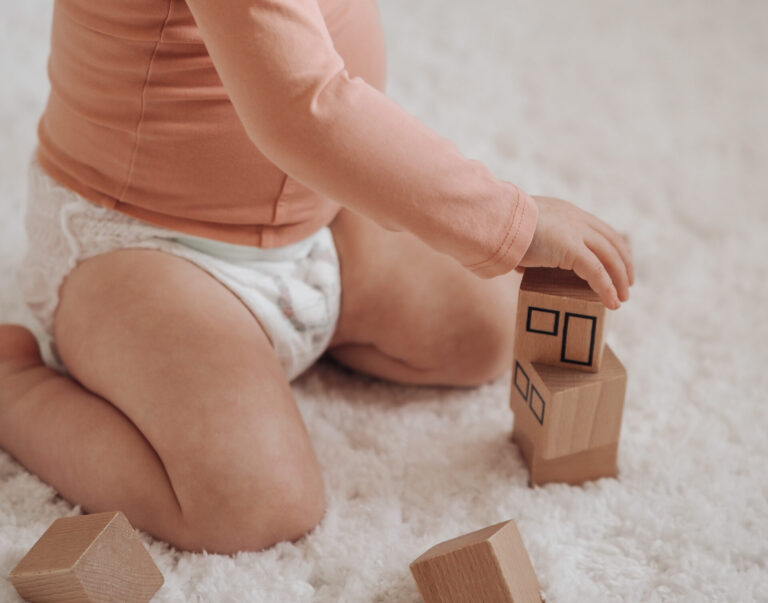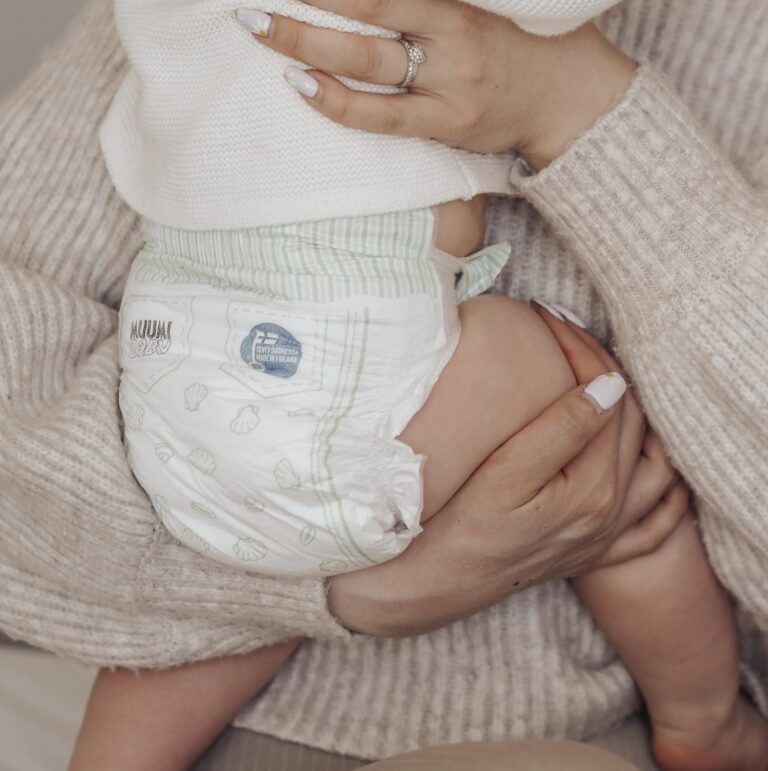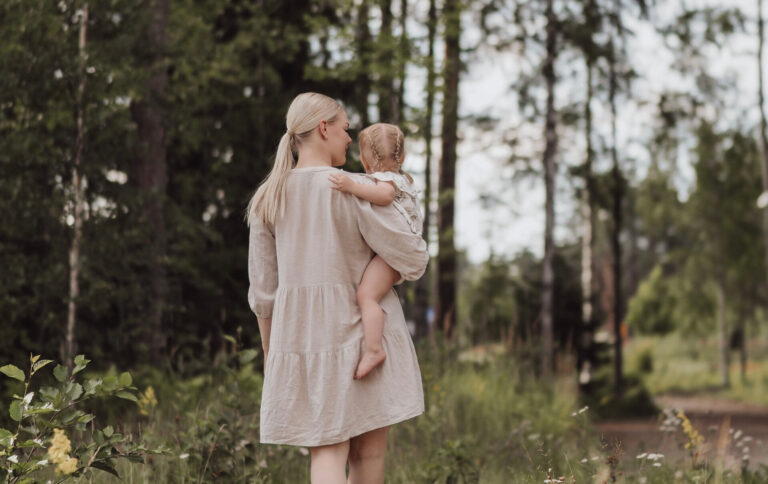When a new little one arrives in the family, parents want to give them the best possible start in life. One of the most important steps is to create a safe and comfortable room for the baby, which will act as a calming nest as they explore a new world. In this article, we go through tips and advice recommended by experts to help you design and implement the perfect environment for your baby’s first moments. The aim is to take into account safety, comfort and a stimulating developmental environment.
Start with safety: Tips for choosing a cot and furniture
When you start planning your baby room, safety should be at the top of your priorities. When choosing a cot, pay attention to its safety standards – make sure it meets national safety requirements and that the cot has no protruding parts that could harm your baby. Also pay attention to the non-toxicity of any paint or finishing materials.
Furniture such as the changing table, chest of drawers and chairs should be sturdy and securely fastened so that they do not fall over as the baby grows and becomes more active. Also remember to protect sharp corners and ensure that small items such as knobs and pulls are securely fastened and do not come loose as your baby explores their environment. Look out for safety products such as socket covers and drawer locks that can prevent damage and give you peace of mind.
Soft landing: The importance of carpets and cushions in the baby’s room
Soft rugs and cushions are particularly important in the baby’s room, as they provide protection and comfort. As your baby learns to turn, crawl and eventually stand up, a soft pad will cushion the impact of a fall or stumble. When choosing a carpet, it’s a good idea to pay attention to how gentle it is on the skin and how easy it is to keep clean. In addition, the base of the mat should be non-slip to maximise safety.
Cushions can also be used around the edges of the cot and around the play corner, providing extra security for a moving baby. Materials should be fire retardant and anti-allergic so as not to pose additional risks or irritation to the baby’s sensitive skin. Soft carpets and cushions not only increase safety, but also add warmth and comfort to the room’s interior, creating a calm and stimulating environment for baby’s sensory development.
Lighting that adapts to your child’s needs
Lighting is an important part of baby room design. It should be both practical and comforting in different situations, such as during breastfeeding or night-time diaper changes. It is useful to adjust the intensity of the lighting in the baby’s room. Dimmed light creates a calm atmosphere in the evenings and at night, while a brighter light is useful during playtimes and for cleaning the room. One recommended option is to choose a lamp with a dimmable LED bulb, it uses little energy and does not heat up dangerously.
When choosing the position and height of the lamp, it is important to ensure that the baby is not directly flashed by the light. Appropriate lighting is important for your baby’s sleep rhythm and makes the room more practical. The ability to change light sources makes it easy to adapt the room lighting to the child’s needs at different stages, making the room more versatile and suitable as the child grows and interests change.
Paying attention to air quality and temperature makes the baby’s room safer, healthier and more comfortable.
Baby’s room air quality and temperature: This is how you can keep them optimal
The air quality and temperature of the baby’s room are important factors affecting the baby’s wellbeing and sleep. The aim should be to keep the air quality in the room clean and fresh without draughts. The room should therefore be ventilated regularly, but avoiding direct airflow while the baby is sleeping. An air purifier can be used to remove allergens and pollutants from the air, especially if there are allergies in the family.
When it comes to the temperature, it is recommended to keep the room cool, around 18-20 degrees Celsius, to help the baby sleep better. Make sure that heat sources in the room, such as radiators or heat pumps, are out of the baby’s reach, and that the room temperature is consistent without localised cold or hot spots.
The humidity level should not be forgotten either – it should ideally be between 40-60%. Air that is too dry can irritate a baby’s respiratory system, while excessive humidity can promote the growth of mold and bacterial growth. You can use a hygrometer and, if necessary, a humidifier or dehumidifier to maintain the right humidity level. Taking these things into account will make your baby’s room safer, healthier and more comfortable.
Storage solutions: Organise your baby’s items in a practical and safe way
Storage solutions are handy in the baby’s room to stop clutter and keep things out of the way, creating a safe space for the baby. It’s important to choose practical storage solutions that are safe for a baby. Shelves and cupboards should be fixed to the wall so that they don’t fall over when the baby tries to climb on them. Storage boxes and baskets should be made of lightweight materials and should not have sharp edges.
Because babies have lots of accessories, such as clothes, toys and care items, neat storage helps to keep the room tidy. Make sure frequently needed items, such as Moomin Baby diapers and cleaning wipes, are within easy reach but safely out of reach of baby’s independent exploration. Toy boxes designed to store baby toys, without lids or with soft closures, are a good choice to prevent children’s fingers from getting caught in between.
As the baby grows, the storage systems can be adapted as needed. Cleverly designed storage not only promotes safety, but also enhances the aesthetics of the room and creates an organised environment that is comfortable for both the baby and the parents.
Find out more about Moomin Baby diapers and other care products here!

Wall colours and patterns: To create a calming but stimulating environment
The colours and patterns of the walls have a big influence on the environment you create for your baby. By choosing calm tones on the walls, such as pastel colours or earthy tones, you can help create a calming atmosphere that promotes good sleep and relaxation. On the other hand, stimulating patterns and the use of brighter colours can be beneficial for your baby’s vision and brain development, especially as they begin to pay attention to their surroundings. It would be wise to use non-toxic paints to paint baby room walls, as babies and young children can be particularly sensitive to harmful chemicals. In addition, the finish and material chosen for the walls should be easy to clean, as in a family with children the walls can get their fair share of messes.
When choosing wall decorations, such as paintings or texts, it is important to remember to attach them securely and safely so that they do not come loose and pose a danger to the child. Remember to keep decorations out of the baby’s reach and make sure they are attached in such a way that the child cannot pull them off as they grow and explore their surroundings.
Soothing soundscape in the baby’s room: From lullabies to the sounds of nature
The soundscape in the baby’s room is an important part of creating a safe and calming space. The right sounds can help calm your baby and may even promote better sleep. Soothing lullabies are a classic and effective way to soothe babies and get them to sleep. You can play gentle melodies or lullabies from a mobile device or use special sleep machines that offer multiple sound options.
You could also consider playing sounds of nature in the baby’s room, such as the splashing of waves, the patter of rain or the soothing sounds of the forest. These sounds can mimic the soundscape of the womb and provide a familiar and comforting soundscape for your baby. It is important, however, to adjust the volume to a safe level – too loud a volume can be harmful to your baby’s sensitive ears.
Also consider the importance of soundproofing. The baby’s room should be protected from noise in other areas of the home so that sudden or loud noises do not frighten or interrupt the baby’s rest. Soft textiles, such as curtains and rugs, can help dampen the echo of the room and make it more soundproof. Overall, the soundscape of a room should support the child’s overall well-being and promote a safe and peaceful environment for growth.
Houseplants and their significance: What to avoid and what to favour?
Houseplants can improve the air quality and comfort of a baby’s room, but it is important to consider which plants are safe to have around your baby. Some plants can be toxic, so they should be kept out of baby’s reach. Choosing safe houseplants, such as milkweed, rush or palmetto, can clean the air and add greenery to a room without risk to the baby’s health.
When adding houseplants to your baby’s room, think about their placement. Plants should be placed so that the child cannot reach the soil or parts of the plant, which could detach and pose a choking hazard. Shelves or hanging plants are a good option to keep plants safely out of the baby’s reach.
Also remember that plants need care and proper watering, so choose varieties for your baby’s room that are easy to take care of and don’t need to be watered too often. The condition of the plants should also be monitored to avoid mouldy plants or soil in the room, which can damage the air quality. When incorporating plants into your baby’s room, keep safety in mind and choose carefully to ensure a comfortable and healthy environment for your baby.
By ensuring that your baby’s room is adaptable, you can create a safe and comfortable environment that grows with your child’s needs and wishes.
Safely updating your baby’s room: Ideas for a growing baby
As children grow, their needs and interests change, and this is inevitably reflected in their space and environment. That’s why it’s important to design a baby room that’s easy to upgrade safely. One way is to choose furniture that grows with the child, such as a cot that transforms into a toddler bed, or changing storage solutions that can be adapted as the baby grows. You can also choose elements on the walls that are easy to change, such as removable wall stickers or paintings that are safe and easy to renew. You can also consider chalkboard paints that can be painted over the murals, giving your child creative space to draw and express themselves, as well as the opportunity to change the look of the room.
Don’t forget the importance of safety in all updates. Make sure that all fixtures and accessories are securely installed and that there are no sharp corners or small parts in the upgraded space that could pose a choking hazard. Check that materials are non-toxic and suitable for children’s use. By taking care of these things, you can create a safe and comfortable environment that will grow with your child’s needs and wishes.
Read about the stages of your baby’s development and what you can expect in the first year here!
Baby room ready, don’t forget the diapers!
Once the baby’s room has been carefully prepared, it’s time to turn your attention to the last, but all the more important detail: the Moomin Baby diapers. Many parents like to stock up on diapers in advance, but remember that your baby is growing fast and diaper sizes can change in a short space of time. Buy the right amount of diapers to start with, but avoid buying too large a stockpile, which may be the wrong size for your baby.
Convenient solutions for storing diapers are useful, such as open shelves or fabric baskets from which diapers can be easily removed with one hand. Also remember that diapers are only one part of the diaper-changing area: keep wet wipes, changing mats and other supplies nearby as well. The ergonomics and practicality of the storage area are key to ensuring quick and safe care routines for your baby. Having everything you need within easy reach makes it easier for parents to stay calm and focused on their baby’s well-being.
We welcome you to try Moomin Baby diapers by ordering your free Diaper Hero sample here!










